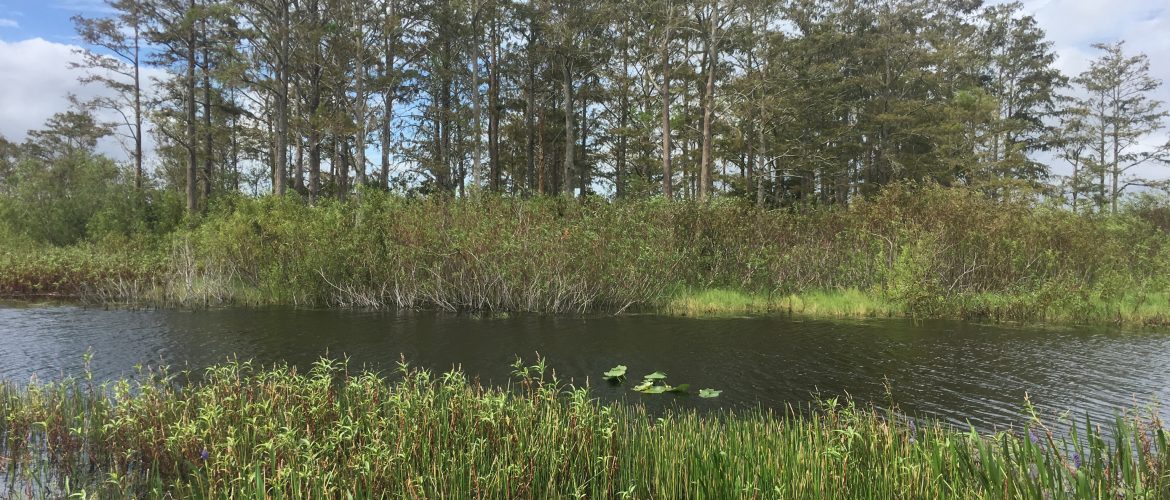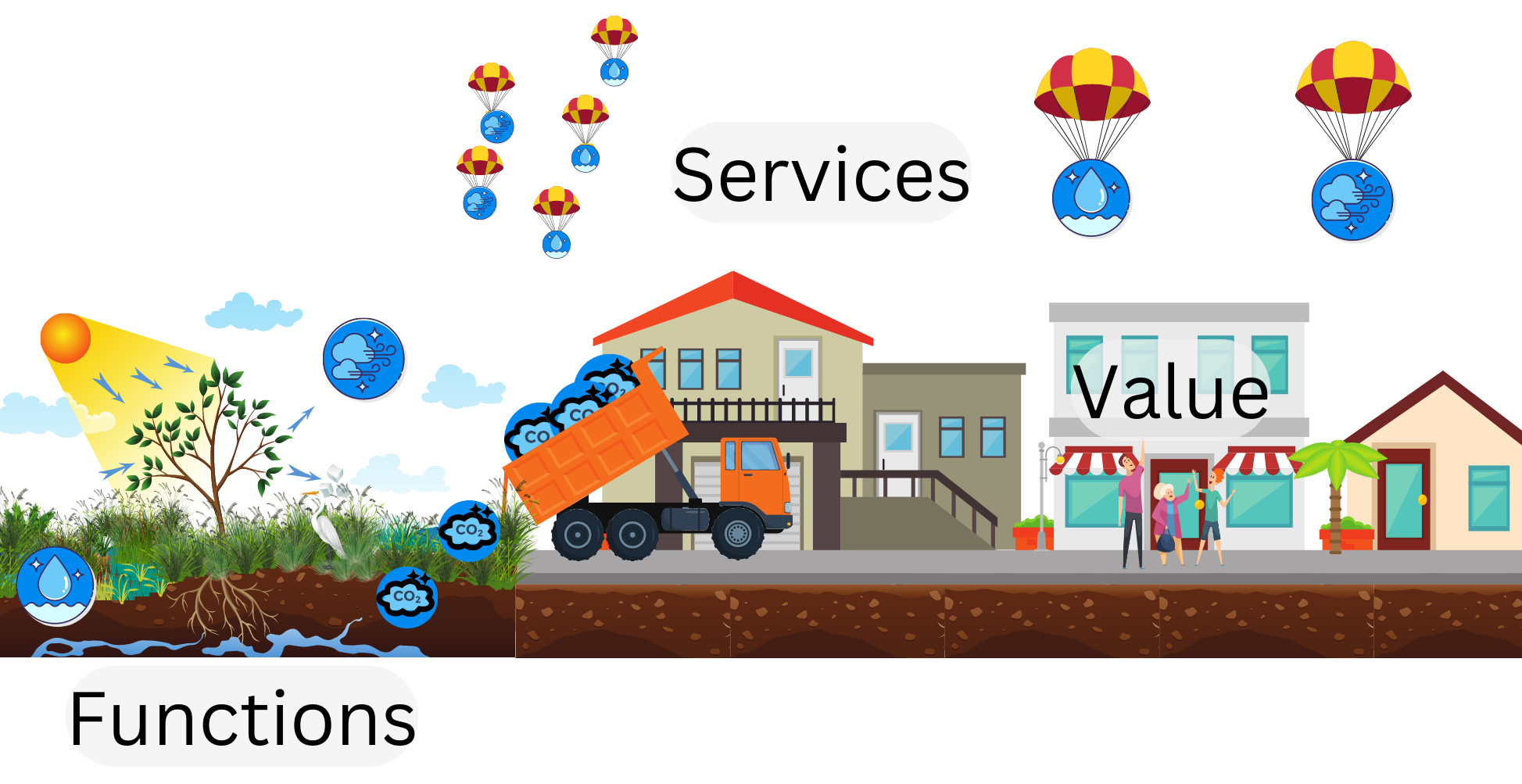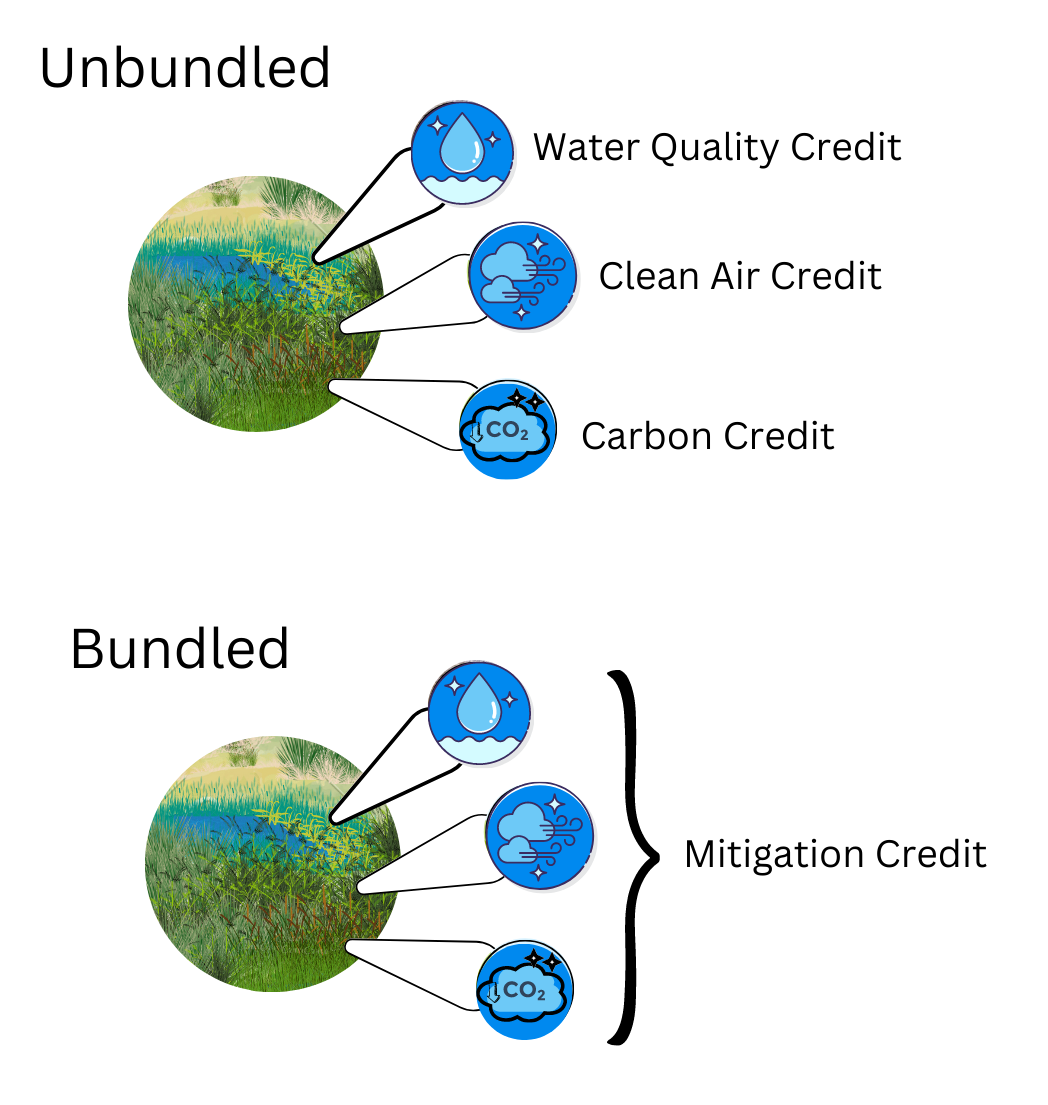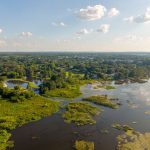In many ways, the mitigation banking industry is one of the first environmental markets, as well as one of the pioneers of offsetting and ecosystem valuation. Looking at how we have done it gives a foundation from where things will grow. As the oldest environmental market in the United States, our methods for environmental valuation is a good place to start that understanding.
We used to get rid of wetlands, what changed?
Our understanding of the importance of the wetland ecosystem has changed over time. This is reflected in policies. Since the 1700s, the informal policy in the US was to fill in and drain the wetlands for public health reasons, protecting against mosquito-borne diseases. Now, in the late 20th, early 21st centuries, there is an onslaught of protections, highlighting our growing awareness of the vital importance of this ecosystem.
Our understanding of its key role in regulating a healthy functioning ecosystem has grown. So too has our understanding of how to build alongside and in cooperation with different ecosystems. Our medical fields have also grown, developing treatment methods that have shifted the public fear from contracting mosquito-borne diseases to a newer fear of losing health benefits that come from nature.
Ecosystem functions, services, and values are interconnected
These benefits to us are a result of the functions occurring inside each ecosystem, resulting in services that we use, and then, as a result, put a value on. This is the breakdown as to how we talk about ecosystem valuation: functions, services, & values.
Functions, services, and values of ecosystems are interconnected. The functions, such as water regulation and carbon sequestration, support the provision of valuable services, such as water supply and climate regulation. These services, in turn, generate various values, including economic, social, and environmental benefits, like preventing drought, mitigating climate change, and supporting sustainable development for example.
Ecosystem functions are the building blocks of healthy ecosystems
Functions refer to the biophysical processes and interactions that occur within ecosystems, such as nutrient cycling, water filtration, and habitat provision. These functions are the fundamental building blocks that support the overall health and functioning of an ecosystem.
Functions are inherently value-neutral, meaning they do not carry economic or social significance.
Ecosystem services are tangible benefits for human well-being
Services, on the other hand, are the tangible or intangible benefits that ecosystems provide to humans and are a result of functions. These services can include clean air and water, pollination, climate regulation, and recreational opportunities. Services are the ways in which ecosystems impact and benefit human well-being.
Services are regulating, provisioning, supporting, or cultural.
Ecosystem values have tangible and intangible importance
- Values are subjective and based on factors like culture and governance. Ecosystem values can be both tangible and intangible.
- Tangible values may include economic benefits, such as the revenue generated from ecotourism or the market price of food products produced by ecosystems.
- Intangible values, on the other hand, are not easily quantifiable in monetary terms but hold significant importance. These can include their intrinsic value, cultural and aesthetic values, spiritual or religious significance, and the rights and interests of future generations.
Values help guide decision-making and resource allocation.
Mitigation credits are bundles of ecosystem service functions
Ecosystem valuation methods can help us determine the value of wetland ecosystems in both monetary and non-monetary terms. It puts a price or a value on a piece of the ecosystem like one of the functions or services. Or, in the case of mitigation banking, it puts a value on the entirety of the ecosystems’ functioning and resulting services.
What mitigation bankers are selling is a grouping of ecosystem functions that take place inside the boundaries of their bank, like carbon sequestration, nutrient cycling, and biomass.
In different environmental markets, these services are broken up and put into individual, siloed assets.
For example, a wetland can offer a water quality credit, a clean air credit, and a carbon credit separately. However, each mitigation credit represents a set of ecosystem services provided by each habitat. So, in mitigation markets, all of these services–water quality, air quality, and carbon sequestration–are bundled into a unit of functional wetland habitat.
Maximizing ecosystem services with stacked credits
For this reason, mitigation banking is slow to develop a process for stacking credits, where you could sell different types of credits on overlapping areas of land, for fear that they may duplicate the sales of ecosystem functions.
Replicating functions for functional equivalence with in-kind credits
Because different habitats provide different services, the system of credit classification aims to label habitats correctly so that each classification has a set group of ecosystem functions and therefore a set group of services.
On the coastline, slope wetlands are not valuable because they are less functional and their services are not needed there. Mangroves are not valuable in-land for the same reasons.
For this reason, mitigation banking stipulates that an impact permittee must buy an “in-kind” credit to offset their impact, one that is structurally and/or functionally similar to their impact.
Additionally, mitigation banking employs the concept of in-basin credits, which are designed to match the supply and demand of ecosystem services within a specific region, ensuring that affected communities can continue to benefit from these services locally.
Matching supply and demand of ecosystem services with in-basin credits
In order to set a price on our natural capital, we have to agree on the value of our environment.
Credit valuation, or the cost of a credit, and ecosystem value are not the same. In some ways, the value of our ecosystem is infinite and it should be impossible to put a dollar value on that. So, it’s understandable that the price we put on different parts of that ecosystem can be debatable, depending on who you are talking to.
Environmental value comes from things that we can measure and things that are harder to pinpoint. For example, we can measure the water quality in a wetland, which is one indicator of ecosystem function that affects our access to clean water, something we value. However, our cultural and societal viewpoints affect how much we value that.
In fact, a measurement of the cultural, spiritual, and historical significance of natural elements is also data we seek to include in our measurement of environmental value. Add this to a large list of other data points in a functional ecosystem assessment and ecosystem valuation is not an easy discipline.
Ecosystem valuation methods assess the worth of ecosystems
That’s why we have ecosystem valuation methods to help us attempt this process. We have a toolbox of market, non-market, and cost-based valuation methods to choose from.
Market-based valuation methods to quantify economic value of services
Market methods use direct or indirect sources of pricing to put an economic value on ecosystem services. For example, they might use the direct market price of shellfish from an estuary to get a value. Or, they might use a related indirect market value of carbon credits to help decide the value of carbon sequestration.
Cost-based valuation methods to estimate the value of replacing services
There are also cost-based valuation methods, where they estimate the value of the services by the cost of replacing or restoring them. They can calculate the cost of building and maintaining a water treatment plant to replace the water purification function of wetlands in the replacement cost method. Or calculating the avoided cost of flood damage by maintaining natural floodplain areas in the avoided cost method.
Non-market valuation methods capture the intangible values
Non-market methods are used when ecosystem services do not have direct market prices or when their value extends beyond economic considerations. They might gather data to gauge peoples’ willingness to pay for ecosystem services by directly asking them via surveys.
Another method is to use peoples’ actual behavior to infer their preferences, like using how much people pay for a property with or near a wetland to decide a value. The benefits transfer method leverages data from previous valuation studies and applies it to the current situation,
The best approach is a complicated one, where many of these methods are used.
Ecosystem valuation informs decisions on land use planning
From a big picture, the Florida Department of Environment (FDEP) & Water Management Districts (WMDs), as well as other government agencies, use ecosystem valuation and impact analysis to decide on land use planning.
They designate certain areas as conservation, zone other ones vital as nature-based infrastructure, or mark other areas as off-limits so they don’t fragment the ecosystems, destroy vital habitat, or cut off the wildlife corridors for animals.
By employing various valuation methods, such as direct market pricing, cost savings, avoided costs, contingent valuation, and benefit transfer, the full range of ecosystem services can be considered.
This affects their decisions about whether to deny or approve permits and bank sites. Their methods for ecosystem valuation also affect the amount of credits they award to a bank or the amount of credits they require an impact site to buy. Their methods of ecosystem valuation are partially explained by mitigation ratios, which are formulas they use to compare and contrast the value of different sites.
Balancing development and conservation with mitigation banking and ecosystem valuation
Regulations set up the demand for a mitigation marketplace to supply ecosystem services. However, the government does not supply the credits, the free market does. Private landowners, non-profits, trusts, and, increasingly, entrepreneurial ventures create, restore, or preserve ecosystems in order to earn credits to sell.
Bankers must build the cost of restoration and bank approval into their credit prices. They put a mark-up on the credit price to make a profit. The size of that mark-up reflects normal market functions, like competition, potential buyers, etc. It also reflects a personal ecosystem valuation that the bankers or credit brokers do to decide the value of their credits.
Market based approaches, like supply and demand, guide the final value of the ecosystem when mitigation credits are bought and sold.
Recognizing the intrinsic value of ecosystems
Setting a value for the ecosystem requires a few things. First, we have to understand that how we view the importance of this ecosystem to our lives will affect how much value we give it. Second, we need to learn how ecosystems impact us and our surroundings so we can ask the right questions when finding methods to value it. Third, we have to understand that ecosystem valuation is an imperfect system but one we can use to help us shift from seeing the environment as a natural resource to be extracted to a natural capital to be grown.













